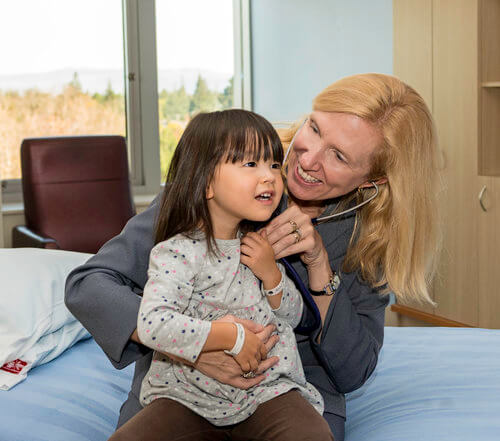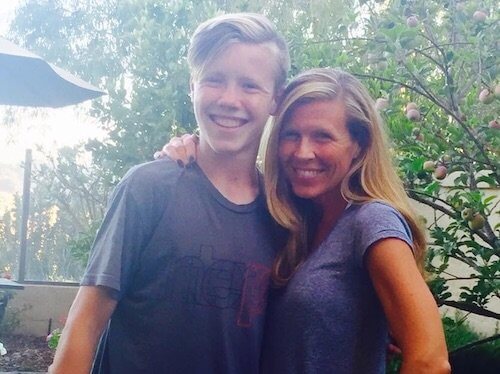The Trials That Changed Everything
In 2009, Dr. Nadeau became the answer to one mother’s question — can you help my daughter? Kim Yates approached Dr. Nadeau after attending her lecture on the clinical trials she was conducting at Stanford. At the time, the trials had been successfully desensitizing patients against single food allergens, but for Yates’s daughter who had over a dozen allergies, enrolling in the trials and treating one allergen at a time could take over ten years. Dr. Nadeau immediately went to work looking for a solution.
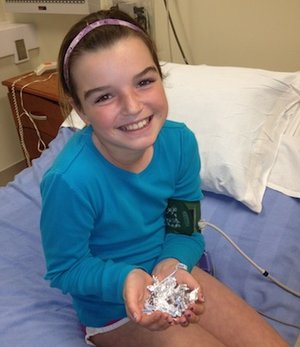
“We went from observing life to living life”
-Kim Yates
What inspired you to take the leap to desensitize for multiple allergies?
When we started around 2010 with some pioneer patients, we were the first site from what I understand to try this. We did trials both with and without Xolair (an anti-inflammatory medication used to treat asthma and allergies), which was really what a lot of people considered novel and innovative. I was inspired by patients to get them moving forward with their customized therapy. Because each person has different types of food allergies, we needed to address this with what I would call “personalized medicine.”
What is the impact of Xolair in treatment?
In food allergies, there is an analogy I like to use. IgE is a “match” that lights the fire behind food allergies. It’s one of many molecules involved in food allergies and has been linked to anaphylaxis. Xolair binds to IgE molecules and covers them up, so that they can’t “light the fire” to an anaphylactic reaction. We wanted to try to help people become desensitized to all of their foods at once, but we also wanted to do it safely. If you’re going to give someone milk, cashew, and other allergens — that’s a lot to take at once. Under the cover of Xolair, we found we could decrease the likelihood of a reaction for some patients while increasing their doses.
Why hadn’t desensitization for multiple allergies been done before?
I think, for many advances in science, there comes a time when enough patients and community stakeholders start to speak up and follow through on an idea. I think it was the perfect timing because we had the right resources and knowledge to do it at Stanford, and a lot was known from other studies at other institutions who shared information. It was also perfect for me because we knew how to do clinical studies. I’d been trained in biotech and was thankful for my previous work with the FDA and IRB — both were very open and receptive to the new studies. Thanks to Stanford, the FDA, and people thinking “out of the box,” we were able to have a separate general manufacturing facility for each different food that we used in the trials. It’s really hard to find a food powder or flour for each different food (almond, pistachio, pecan, wheat, etc.) that meet the standards of the FDA, which are very necessary and strict.
The Clinical Trials Today
What makes the Stanford team different from other research centers?
We’re very lucky to have a wonderful, community-based force. We’re inspired by our children, and we want to help families living with this disease. I feel very lucky to have our coordinators, community managers, and parents who have helped out so much. We want to do research based on what patients want, so it’s been really great to work together to understand what those needs are.
We also want to help research outside of Stanford. We try to make sure we collaborate with other institutions so we can help and make an impact globally. We want to plant the seed so that those people can do research, can learn how to do this, then sustain it in their own local area.
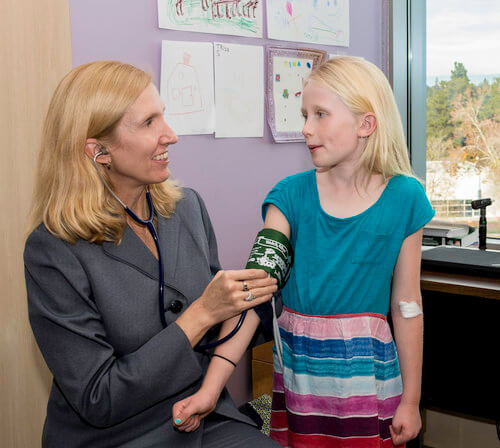
How many patients have you treated at the Center?
Since 2009, our center has performed clinical trials with more than 800 and screened more than 2000 individuals with food allergies. We also perform research in asthma, EoE, and allergic rhinitis.
What is the largest number of allergens you’ve treated at once?
We have treated as many as 21 allergens at once.
Are there any misconceptions about the clinical trials?
I really want to demystify the assumption that you have to live in San Francisco Bay area or have the resources to travel to the Center to take part in our research. We feel very compelled to make sure the underserved have access — that is why I like working at an academic institution. We have several programs for the underserved because the underserved are one of the populations at the highest risk for anaphylaxis. It’s important to understand that this disease has no boundaries in terms of socioeconomic status or ethnicity.
How does anxiety and psychology play into the trials?
We have a great Marriage and Family Therapist, Marté Matthews, who supports the needs of each family and patient because anxiety is a big part of it, and it’s appropriate anxiety. I want to make sure we address that. I think psychologists and psychiatrists should think about specializing in this disease more because giving patients support isn’t just about therapy and prevention, but it’s also about how we can try to help with overall wellness and nutrition.
The Center is named after Sean Parker — how has he impacted the progress of food allergy research along with other philanthropists?
Sean Parker is amazing — he has a vision and really believes in thinking disruptively and “out of the box” to help humanity. He has allergies himself, and his inspiration, ideas, and philanthropy have helped so many already. We need to make sure that we work together collaboratively in research, and we’re very grateful for partnerships with funding agencies like the National Institutes of Health (NIH), FARE, End Allergies Together (E.A.T.), and The Safe + Fair Food Company — it all helps. And it’s not just monetary donations — people have talents that make everything we do possible.
Besides working with patients, what other research are you working on?
A critical part of our Center is to help the field to advance therapies by studying the immune system. By understanding the immune system and how it changes over time, we are able to find and test better drugs. In summary, it is critical to understand the mechanisms of disease. We have 25 laboratory-based experts in the Center who are working on immune monitoring. I spend about half my time working with the laboratory to find new molecules in the skin or in the blood — biomarkers that could predict the various diseases or treatments. These are the things that you want a scientist to be able to find out for children or adults as they go through therapy, and that’s a key component to our research — we would be nowhere without the link between the laboratory and the clinical research.
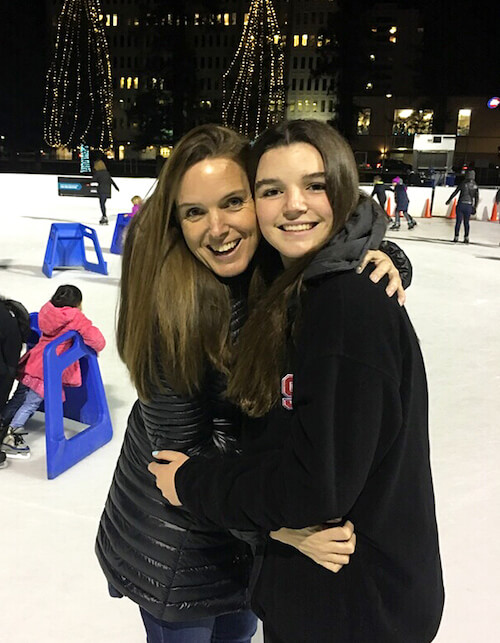
How does life change for a family who goes through the trial?
I’ll quote patients because those are the most important people in this — they are my inspiration, and they are the true heroes. There can still be allergic reactions during the study, so we say to always carry reaction meds at all times. For the most part, patients say the therapy gives them peace of mind. After therapy was given, another parent was quoted as saying, “Instead of watching the world from afar and being afraid of it, now we can actually live in the world and be part of it.” A lot of kids will say that they finally feel comfortable going out to eat, going on an airplane, or going to a birthday party and not having to worry. That is key to me — improving people’s appreciation of life.
How can I join a clinical trial?
The registry for our center is a starting point. As soon as people enter our registry, they become part of our research and our data set, and that’s how you sign up for a wait list to be screened for eligibility for a trial at our Center. We also jointly recruit for other satellite sites implementing our studies in Los Angeles, Chicago, Mt. Sinai, Boston Children’s, Cincinnati, Seattle, and Philadelphia.
History in the Making
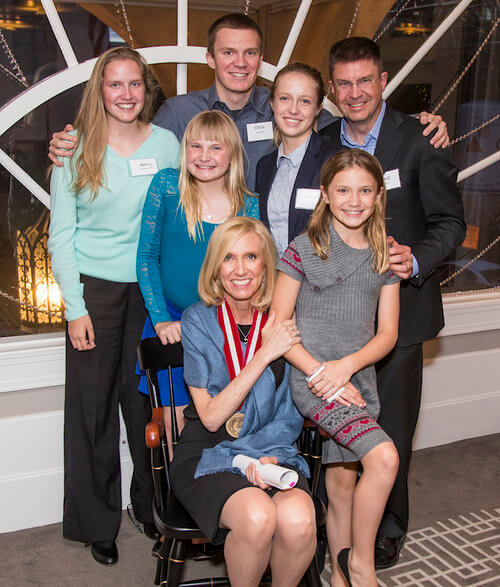
This January, you are chairing a Gordon Research Conference dedicated completely to food allergy scientific research. Why is this so notable?
For the first time in the world, international people are coming together to talk about the therapeutics and science of food allergies at a Gordon Research Conference, which is so important because it’s one way to bring scientists together to discuss new discoveries. The NIH and the FDA will be there. We have FARE, EAT, drug companies and major journals coming — we want the entire research and scientific community engaged. Most of what is presented will be unpublished data, so many talks are going to be reflective of cutting edge science. Most importantly, it will establish collaborations so researchers can work together to impact and be inspired by more patients, so that we can do better.
We are at an inflection point in history, and these food allergy-focused Gordon Conferences will continue to provide a venue for collaborative science and progress. We won’t solve everything in a week, but we can get people to talk to each other and start to share science and do more research in this important field.
Besides your incredible research, are you seeing evidence that there is hope for food allergy families in the future?
We’ve all come a long way. When you think of how many people have food allergies, it’s millions and millions, so we really need to tackle this on the reactive side of therapy and the proactive side of prevention. There are currently almost 14 known companies in the space, lining up to try to cure food allergies. That is really impressive just compared to four years ago when there were about two companies working in food allergy. This is a team effort, so the more we can all work together, the better the future will be for families with food allergies.

